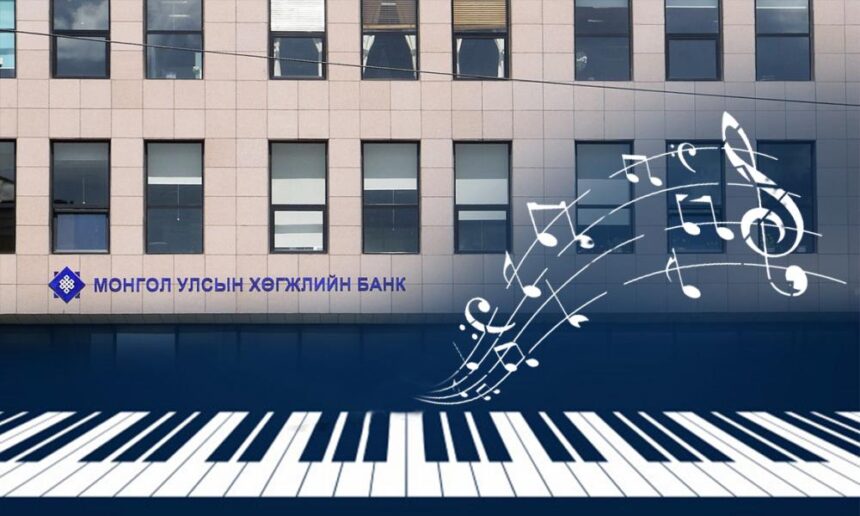Not long ago, many people claimed that the establishment of a Development bank would easily solve our development problems. But now, 10 years later, the government does not know what to do with the Development Bank. The situation is analogue to someone lending a lot of money to buy an expensive Steinway Grand piano as well as hiring a good piano instructor, and yet ending up not having learned to play a single sonata. Moreover, the lender has now fired the instructor and is playing the piano wildly until it loses its fine tune. What do we make of the Development Bank which looks like a misused piano that got dragged into the corner of the stage?
Development Bank Bubble
On July 20 in 2010, Prime Minister Su. Batbold decided to establish a state-owned Development Bank to finance major development projects and programs. Half a year later, the law on this bank was approved, and on May 12, 2011, the Development Bank of Mongolia (DBM) officially started its operations. A cooperation agreement was signed with the Development Bank of Korea on August 30, 2011, and five DBK specialists were sent to work here for four years. Kim Jang Jin was appointed as Chief Executive of DBM.
On November 30, 2011, the DBM issued USD 20.0 million worth of bonds in closed form, and in March 2012, it issued USD 580.0 million worth of bonds with an interest rate of 5.75% on the international market. In June 2012, the Democratic Party won the parliamentary elections, and Prime Minister N. Altankhuyag rescinded the agreement with the Koreans on May 25, 2013, “because the bank’s operations have stabilized.” The DBM had assets, and the government had no plans to spend the $ 1.5 billion from Chinggis bonds, so it had been paying an interest of $ 6 million a month for six months without actual operations. The Koreans, who spoke of good corporate governance and the rule of law, must have been preventing the authorities from taking that enormous amount of money for political purposes.
In 2012, the Ministry of Economic Development was established. Former Minister N. Batbayar was recently acquitted on the grounds that his statute of limitations had expired, despite a criminal case alleging abuse of power and misappropriation of public funds in connection with the issuance and disbursement of the Chinggis and Samurai bonds. N. Munkhbat, the former Chief Executive of the DBM, was interrogated due to many years of abuse of office and was recently transferred to court.
Prime Minister Ch. Saikhanbileg dissolved the Ministry of Economy in 2014 and established the Ministry of Industry in its place. Former Minister D. Erdenebat was recently sentenced to 4.6 years in prison on charges of giving up 49 percent of Russia’s stake in Erdenet Mining Corporation to the government and giving preference to Mongolian Copper LLC.
In the 2016 parliamentary elections, the Mongolian People’s Party won and dissolved the Ministry of Industry, and transferred the DBM to the Cabinet Secretariat of Government. In April 2020, the DBM was transferred to the Ministry of Finance and its board and executive management were changed. N. Munkhsukh, former head of the Treasury Department, was appointed as the Executive Director, and S. Narantsogt, Secretary General of the Ministry of Finance, was appointed as the Chairman of the Board. The former Chief Executive G. Amartuvshin, resigned a year ago to run in the elections. Deputy Chief Executive Ch. Enkhbat was removed from his position and the law enforcement bodies began their investigation.
Thus, still no government agency is responsible for the development and financing of Mongolia’s long-term development plan, which needs to be implemented by the DBM.
Inside the Trap of Non-Performing Loans
As of the third quarter of 2020, the DBM has assets of 4.3 trillion tugriks, of which 77 percent are loans and half of loans are non-performing. According to the Bank of Mongolia regulations, 1.3 trillion tugriks needed to be placed in the non-performing loan risk fund but only 477 billion tugriks were accumulated. The rest consists of 204 billion tugriks from QSC LLC, owned by the Trade and Development Bank owner, 268 billion tugriks from Khutul LLC (this money was allegedly used to acquire 49% of Erdenet Mining Corporation), 204 billion tugriks from SHCM (State Housing Corporation of Mongolia) SOE, 115 billion tugriks from Erel LLC, and 54 billion tugriks from Beren LLC and others make up the 844 billion tugriks from around 40 borrowers not paid for over a period of more than 1,000 days.
DBM has a capital of 1.1 trillion tugriks, a bond debt of 2.4 trillion tugriks and a foreign loan of 793 billion tugriks, thus, if they pay off in the appropriate order after establishing a contingency fund, technical default is imminent. This is the reason for them not to make the contingency fund by all means. We hope that the next audit report, issued in a few months, will include this problem. Because of this, the bank’s new Chief Executive and board of directors are reluctant to post pictures on the website.

https://www.dbm.mn/about/board

The DBM Large loans of borrowers related to politicians have not been repaid, and many lawsuits have been filed for several years now. Hundreds of millions are spent on state stamp duty on each trial. Moreover, 16 percent of DBM loan deposits are licenses, 23 percent are real estate, 54 percent are future assets, and 7 percent are equipment. Our Development Bank has become a commercial bank. This reality signifies that DBM’s successive leaders have been influenced by politics, neglecting good corporate governance and conducting bad operations since the Koreans.
Time to tune our instrument
The Development Bank of any country is an institution that finances long-term projects, and its management must be stable and transparent and provided by a specific government agency. The example of the Korean Development bank shows that good corporate governance can help provide low-interest foreign funding for large infrastructure projects and lay the foundation for economic development.
As mentioned above, Mongolia has not established such a governing body, and the activities of the DBM have not stabilized to this day. The 2011 DBM law was revised in 2017 at the request of the IMF and its budget financing was stopped.
In order to overcome the current stagnation of the DBM, it is necessary to complete the non-performing loan risk fund, close it with its own funds, increase its capital, create a specific government agency (or the National Development Agency), and then make all its activities transparent and non-political. Transferring the monitoring to the Parliament would be accurate. If these measures are not taken immediately, the DBM will not be able to repay its external debt. The DBM will have to repay $ 104 million in principal and interest in 2021, $ 107 million in 2022, and $ 834 million in 2023. If the DBM fails to repay this debt, the government will be responsible for issuing the guarantee, which will increase the government’s external debt by another $ 1 billion.
If we can get rid of the bad loans of the DBM and establish good governance, there is an opportunity to attract very cheap foreign investment in the Tavan Tolgoi thermal power plant and other large projects that are currently being planned. At a time when international financial market interest rates are almost zero, due to the pandemic, it is time for the Mongolian government to wisely restructure its Development Bank.
2020.11.25
Trans. by Riya.T and Munkh-Erdene.D












